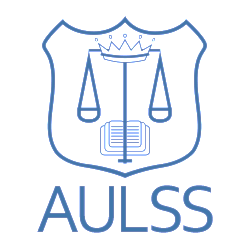Sexual Harassment Laws in Australia
Written by Madeline Ellis, Edited by Divya Narayan
Australia prohibits sexual discrimination and harassment at both the state and federal level. In the absence of any Constitutional guarantee of equality or a bill of rights enshrining this principle, Australia’s anti-discrimination laws are foundational in protecting rights of equality.
The Legal Framework
South Australians are protected from sexual harassment under section 87 of the Equal Opportunity Act 1984 (SA).[1] The legislation places a greater focus on sexual harassment in the workplace, in educational institutions or by people connected with those institutions, or in the course of supplying goods and services. The lack of coverage over other areas of sexual assault in the SA Act is a deficiency that leaves the regulation of sexual harassment offences more generally to federal legislation, namely the Sex Discrimination Act 1984 (Cth)[2]. This legislation was introduced after Australia became a signatory to the United Nations’ International Convention of the Elimination of All Forms of Discrimination Against Women in 1983.[3] In addition to condemning discrimination on bases such as sex,[4] gender identity,[5] sexual orientation,[6] marital or relationship status,[7] or family responsibilities,[8] the Act also prohibits sexual harassment.[9]
The key elements of sexual harassment as enumerated in the SDA[10] are as follows:
There is a sexual advance, request for sexual favours or other conduct of a sexual nature. The term ‘conduct’ has been broadly interpreted. As such, isolated conduct that may not appear to be sexual in nature may become so when understood contextually considering the surrounding circumstances. For instance, the Federal Magistrates Court found that flicking rubber bands at a co-worker’s legs constituted sexual conduct as it formed part of a wider pattern of sexual behaviour.[11]
The behaviour is unwelcome. Case law indicates that unwelcome conduct includes behaviour that is not solicited or invited and where it is regarded as undesirable or offensive.[12]
The test concerns whether a reasonable person in the circumstances would have anticipated the possibility that the person harassed would be offended, humiliated or intimidated.[13] This is an outcome of a 2011 amendment whereby the threshold was lowered to require only that the possibility be anticipated, rather than the earlier phrase that a reasonable person would have anticipated the impact of the behaviour.[14]
The Act also provides a non-exhaustive list of the relevant considerations regarding the circumstances surrounding the behaviour. These include the sex, age, sexual orientation, or relationship status of the person harassed,[15] as well as the relationship between the person harassed and the person perpetuating the sexual conduct,[16] and any potential disability of the person harassed.[17] It is unequivocal in the case law that sexual harassment can be constituted by a single incident,[18] and that no test of seriousness exists.[19]
Sexual harassment is protected in specific areas of public life, including employment, provision of education; provision of goods, services and facilities; accommodation; clubs; and in the administration of Commonwealth laws and programs. Employers may be found vicariously liable for any employee’s sexual harassment, unless “all reasonable steps” are taken to prevent the occurrence.[20]
Impending Reforms
Despite any effort being made to effectuate gender equality, Australia was ranked 50th in a global ranking for gender equality in 2021, scoring particularly low in areas of political empowerment and economic participation.[21] These findings, as well as the recent spate of high-profile sexual harassment allegations, has prompted the federal government to announce new anti-harassment reforms. This has also been in response to the Sex Discrimination Commissioner’s landmark Respect@Work national inquiry report, which found the current legal and regulatory framework to be “complex and confusing”.[22]
Proposed reforms include amending legislation to make members of parliament, the judiciary and public servants accountable for workplace harassment,[23] increasing the timeframe permitting employee lodgements of sexual harassment complaints to the Australian Human Rights and Equal Opportunity Commission from six months to two years,[24] and including sexual harassment within the definition of “serious misconduct” in the Fair Work Regulations 2009 (Cth), validifying the warrant for immediate dismissal from employment without notice.
Summary
The current legislative framework prohibiting sexual discrimination and harassment, whilst comprehensive in its current iteration, clearly includes scope for reform to improve protections for Australians. Increasing public awareness and Commission investigations have prompted the federal government to re-evaluate and strengthen these protections, however the implementation and impact of these proposed reform remains to be seen.
[1] Equal Opportunity Act 1984 (SA).
[2] Sex Discrimination Act 1984 (Cth) (‘SDA’).
[3] Convention of the Elimination of All Forms of Discrimination against Women, opened for signature 18 December 1979, 1249 UNTS 13 (entered into force 3 September 1981).
[4] SDA (n 2) s 5.
[5] Ibid s 5B.
[6] Ibid s 5A.
[7] Ibid s 6.
[8] Ibid s 7A.
[9] Ibid pt 2 div 3.
[10] SDA (n 2) s 28A.
[11] Shiels v James and Lipman Pty Ltd [2000] FMCA 2.
[12] Aldridge v Booth & Ors (1988) 80 ALR 1 at 5.
[13] SDA (n 2) s 28A.
[14] Sex and Age Discrimination Legislation Amendment Act 2011 s 53.
[15] SDA (n 2) s 28A(1A).
[16] Ibid.
[17] Ibid.
[18] Hall & Ors v A. & A. Sheiban Pty Ltd & Ors(1985) 85 at 514-515.
[19] Ibid.
[20] SDA (n 2) s 106.
[21] World Economic Forum, Global Gender Gap Report 2021 (March 2021) < https://www.weforum.org/reports/global-gender-gap-report-2021/>.
[22] Australian Human Rights Commission, Respect@Work: National Enquiry into Sexual Harassment in Australian Workplaces (2020) 14.
[23] Caitlin Ellis, Australia’s PM Scott Morrison to end sexual harassment exemption for politicians’ Newshub (online, 9 April 2021) < https://libguides.murdoch.edu.au/AGLC/newspaper>.
[24]Ibid.
